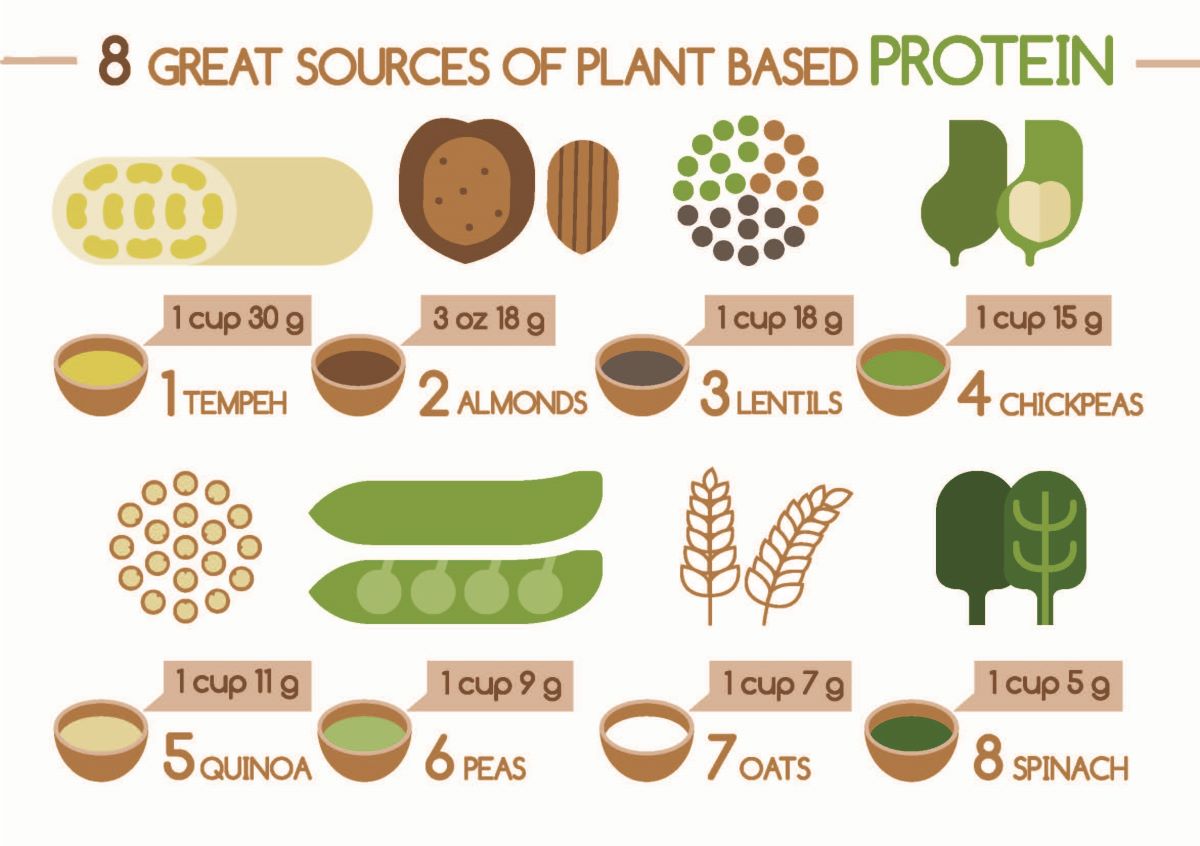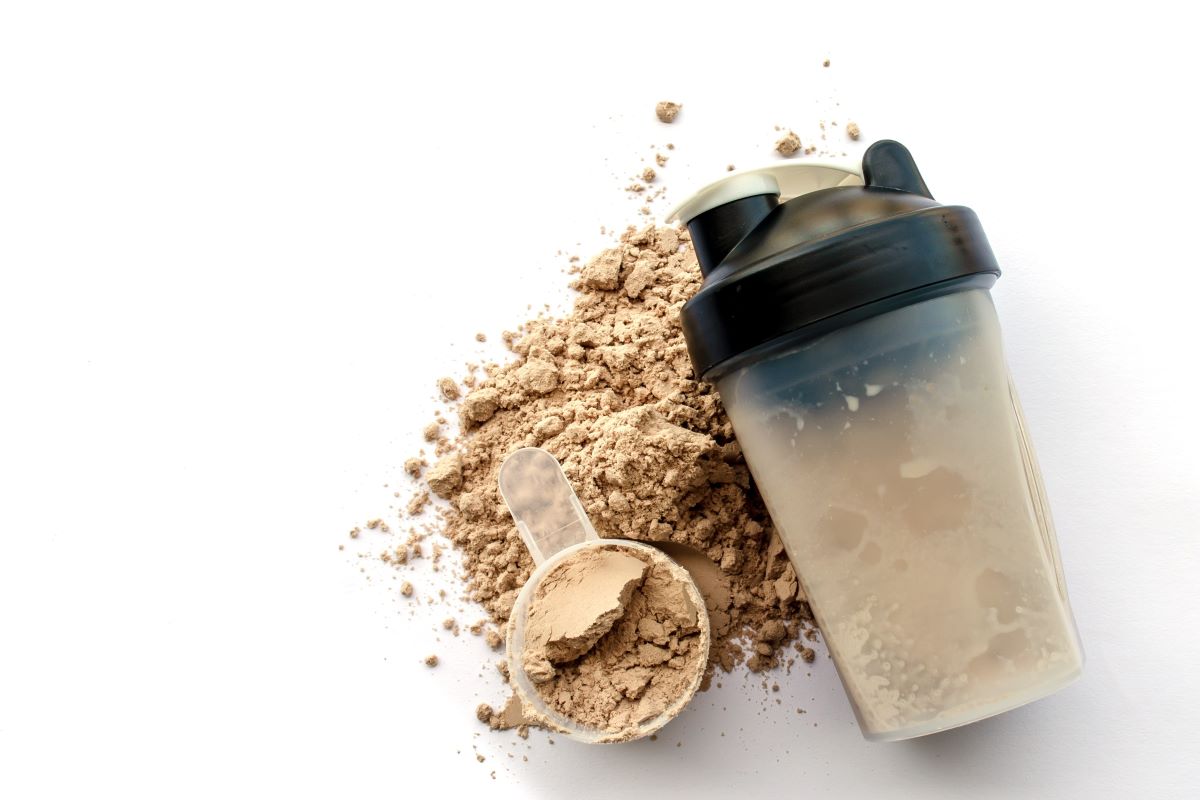[Author’s Note: When we started the Running on Science column, we were worried we would run out of topics to write about. Five years later, that’s not even close to being the case! However, with new and exciting life and career moves on the horizon, it’s my time to step away. I owe so much to the team behind the scenes at iRunFar — especially Meghan Hicks — as they’ve made me into a much better writer than I ever thought possible. To our readers, this won’t be the last science column you read in this place. I know this wild idea that Dr. Tracy Høeg and I originally pitched will always have a special home here, and it’s a column I’ll continue to read with my morning coffee.]
The group I run with has this unwritten rule. We are not allowed to talk about what we are going to eat post-run until we are less than three miles from the trailhead. And while the list of post-run noshes is long and runs the complete spectrum of food groups, we often overlook the first actual thing we’ll consume when we make it back to the car — the humble recovery beverage. Usually, it is a combination of protein and carbohydrates, something to get us to our next real meal and kickstart the recovery process.
Let’s face it, as endurance athletes, we understand that fueling our bodies is critically important, and because of that, we spend a lot of time thinking and talking about food. In the endurance community, this usually revolves around carbohydrates: how many grams you’re ingesting per hour during your run, how much you’re trying to eat pre-race, and how much you need post-run. You get the picture.
But what about another important macronutrient, protein? For many of us, protein often is an afterthought, something we’re likely scraping by in our carbohydrate- or fat-focused fuel plan. How important is protein for endurance athletes? What role does protein have in our diet? And how do we benefit from it pre-, during, and post-exercise?
Protein Basics for Endurance Athletes
Protein in its most basic form is a macronutrient made up of amino acids or what we routinely call the building blocks of life. They are compounds that are critical for you to build not only proteins but also hormones and neurotransmitters. You’ve likely heard of the term essential amino acids before. That’s where ingestible protein comes into play. Essential amino acids are amino acids that cannot be made by our bodies, we have to ingest them. There are nine essential amino acids: histidine, isoleucine, leucine (remember this one), lysine, methionine, phenylalanine, threonine, tryptophan (did someone say turkey?), and valine.
We are literally made of protein. Our bodies have many uses for the protein we ingest. Some is used for muscle protein synthesis in repairing tissues; some forms hemoglobin, which allows our red blood cells to carry oxygen; and we also can use protein for fuel by drawing on our amino acid pool when we are running low on carbohydrate stores (1). So yes, while carbohydrates and fats are our primary fuel sources for generating energy that keeps us running down the trail, protein should not be overlooked.

Tailwind Endurance Fuel and Recovery Mix are among the iRunFar team’s favorite running and recovery food, and the protein-rich recovery mix is just as merited as the carbohydrate-dense endurance fuel. Photo: iRunFar/Eszter Horanyi
How Much Protein Do We Need?
Daily Intake
Broadly speaking, the average individual has a recommended daily allowance (RDA) of 0.8 grams of protein per kilogram of body weight per day. But an RDA is not the optimal amount of protein for you — an active endurance athlete who has a multitude of factors at play, including age, lifestyle, physical activity, body composition, and underlying chronic health conditions — and what we need to know here is your estimated average requirement (2).
Exercise breaks down muscle proteins, and what we do as endurance athletes breaks down quite of bit of it — meaning we need to ingest more protein than the average person. Getting this balance right prevents the loss of muscle tissue, aids in recovery, and helps maintain muscular strength. While we are not always trying to build muscle like a strength and power athlete, we still have high protein needs to allow for physiological adaptations to occur and make the most of our training.
The general consensus at this point, including from the International Society of Sports Nutrition, is that endurance athletes need at least 1.4 to 1.6 grams of protein per kilogram of body weight per day and as much as 2 grams per kilogram per day during peak training (1, 3). That’s two to 2.5 times more protein than the average person! For an athlete weighing 75 kilograms (165 pounds), that’s 105 to 120 grams of protein most days, and as much as 150 grams during peak training volumes.
I find this all difficult to visualize, so here is a list of protein-rich items and their protein content:
- 2 eggs — 14 grams
- 1 cup of cottage cheese — 28 grams
- 1 medium-size chicken breast — 25 to 30 grams
- 2 tablespoons of almond butter — 8 grams
- 1 ounce of nuts — 6 grams
- 1 cup cooked lentils — 18 grams
- 1 cup cooked quinoa — 8 grams
Protein During Exercise
While in most activities protein ingestion is most critical in the two-hour window post-exercise, our sport has slightly different nutritional demands as highlighted by this article. One interesting difference is that we have the ability to comfortably ingest fat and protein on the run when we are racing at lower intensities.
When your runs and races get long, protein can also be on the menu. In practice, what this looks like is up to 0.25 grams of protein per kilogram of body weight per hour, again for a 75-kilogram (165 pounds) athlete that’s 18.75 grams of protein per hour (1).
What I’ve personally done is to add in a recovery drink that contains carbohydrates and protein during long races like the Western States 100, UTMB, and long runs like the Tahoe Rim Trail every four to five hours. What are the benefits? When it comes to protein on the run, adding it in mostly aids in limiting exercise-associated muscle damage.
Ingestion also aids by reducing creatine kinase elevations (a marker of muscular damage), decreases subjective feelings of muscle soreness, and may increase muscle protein synthesis (1). This becomes more important as ultramarathons grow longer, contain lots of eccentric contractions (read: running downhill), and during stage races where rapid recovery is important.
Protein Immediately After Exercise
When you are suddenly trying to get in 100 grams of protein in a day, timing and dose become really important, in order to most readily absorb the protein you are ingesting.
You’ve likely felt pressure to comply with the rule of ingesting protein within two hours after your long and hard sessions. This does appear to provide great muscular and mitochondrial protein synthesis (repairing muscular tissues) and aid in glycogen synthesis (replenishing those carbohydrate stores in your muscles) (3). So, how much protein should you be ingesting during this window?
Well, you can only really absorb 25 to 30 grams of protein at a time. Much above that, and you start to produce expensive urine. The go-to post-exercise recommendation is around 0.3 grams per kilogram post-exercise (1).
Spread It Out
Finally, and maybe the step we struggle with the most, it’s helpful to spread out your protein intake — not just between your three main meals a day — but every three to five hours, utilizing protein-rich snacks as well. This allows us to ingest protein in a quantity that we can actually absorb and actually helps us maximize muscle protein synthesis.
The Type of Protein Matters
While there are lots of foods that are high in protein, it turns out the type of protein also matters. For the longest time, branched-chain amino acids (BCAAs) — leucine, isoleucine, and valine — have gotten a lot of attention. And while this is not entirely unwarranted, a new favorite has risen to the top — leucine. Specifically, protein sources higher in a range of essential amino acids (not just the three in BCAAs) that also contain leucine have become the ideal protein type for muscle protein synthesis (1).
The places you will find the highest amounts of essential amino acids and specifically leucine are in dairy products, and other animal proteins, but are also in pumpkin seeds, peas, navy beans, and cooked oatmeal. What that means practically for most athletes, is that while there are good whole-food sources of leucine, if you are also going to invest in protein/recovery drink mixes you are going to want to lean into whey, pea protein, and pumpkin seed protein options.

When I think of protein-rich meals, my memory jumps back to living in the U.S. Olympic Training Center in Colorado watching bobsledders live on a diet of chicken breasts and broccoli, and while animal proteins abound, there are many other sources of protein around us. Image: Shutterstock
Takeaways
- We are protein. While we might fuel our runs and races on carbohydrates and fats, we can’t overlook the importance of the last-but-not-least macronutrient — protein. Proteins, and the amino acids they are made from, are our foundational building blocks.
- Endurance runners need more protein than the average person. While the average individual needs around 0.8 grams of protein per kilogram of body weight, endurance athletes need as much as 1.4 to 2 grams of protein per kilogram of body weight. This allows us to maintain muscular strength, repair tissue damage, and even becomes a fuel source if we are running low on carbohydrates.
- Consider a little protein on the run. Adding in up to 0.25 grams of protein per kilogram of body weight during long runs and races might help prevent muscle damage and associated muscle soreness. Just like with anything new, we’d recommend you try this in training before implementing it on race day.
- Timing matters after exercise. You have a heightened window for muscular protein synthesis (and glycogen resynthesis) post-exercise for approximately two hours. Use it.
- You can only absorb so much. Most people, in one sitting, can absorb 25 to 30 grams of protein. This is at least the sweet spot for utilizing this protein for building and rebuilding purposes. Because of this upper threshold, it’s also best to spread your protein consumption out over the course of the day, aiming to consume 20 grams every three to five hours.
- Look for leucine. While BCAAs have been all the rage, truly leucine (one of the three BCAAs) is the queen of the protein castle. While animal proteins and particularly dairy products are rich in leucine, you can find leucine in plants as well like peas and pumpkin seeds.
Call for Comments
- What’s your favorite protein source?
- Any tips for squeezing more of it into our diets?
[Editor’s Note: Every trail has its end somewhere. We’re so grateful for the time and love that Corrine Malcolm has put into the Running on Science column. Her dedication to serving you, the reader, has always been unwavering. We’re excited to see her next steps, and we’re also excited to bring you the next version of Running on Science. Thank you, Corrine!]
References
- Vitale, K., & Getzin, A. (2019). Nutrition and supplement update for the endurance athlete: Review and recommendations. Nutrients, 11(6), 1289. https://doi.org/10.3390/nu11061289
- Mercer, D., Convit, L., Condo, D., Carr, A. J., Hamilton, D. L., Slater, G., & Snipe, R. M. (2020). Protein requirements of pre-menopausal female athletes: Systematic Literature Review. Nutrients, 12(11), 3527. https://doi.org/10.3390/nu12113527
- Jäger, R., Kerksick, C. M., Campbell, B. I., Cribb, P. J., Wells, S. D., Skwiat, T. M., Purpura, M., Ziegenfuss, T. N., Ferrando, A. A., Arent, S. M., Smith-Ryan, A. E., Stout, J. R., Arciero, P. J., Ormsbee, M. J., Taylor, L. W., Wilborn, C. D., Kalman, D. S., Kreider, R. B., Willoughby, D. S., … Antonio, J. (2017). International Society of Sports Nutrition Position Stand: Protein and exercise. Journal of the International Society of Sports Nutrition, 14(1). https://doi.org/10.1186/s12970-017-0177-8


